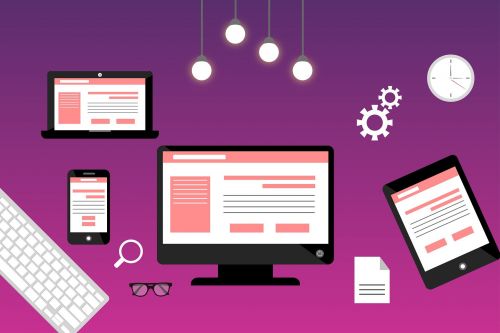Implementing Best Practices For Web Design With Iterative MethodologiesA Story by Codeares Global IT SolutionsCarving out the contours to any project life span is always best structured with a steady framework to ground its foundation. Many digital design agencies navigate their strategies and workflows with
Iterative
involves a much more flexible and dynamic mode to design. It neatly
intersects with an agile workflow as it cycles between design,
prototype and testing until the overarching goal is achieved. Typically
conducted in sprints, iterative has propelled web designers in oman with
productivity, reduced overhead costs and functions as an ode to placing
the user at the center of any design. However,
iterative methodologies are only as efficient as the team that implements
them and can be achieved with best practices that embody these flexible
strategies. A focus on the user User
experience design continually develops new methods that center the user around
its design decisions. User experience design works in tandem with an iterative
web design approach. It focuses on how to subsequently make a design better as
the timeline of a project rolls out. When incorporating iterative
design strategies, that emphasis on the user should never turn murky or
become lost in the process. Iterative
workflows function best when they continuously scrape away at design
elements that may be clouding the experience with cognitive friction. Although
collaboration and feedback with a company/client act as the backbone to
iterative, being aware of the need to align design with a brand identity also
informs the user's overall experience. Within
the iterative cycles, design components that need to be adjusted throughout
should be focusing on how to remove design clutter. Collaborative cycles within
iterative design can ensure that there is no visual clutter. Navigation is
clear as journeys lead to corresponding expectations and content is not
abstruse. These can be cleaned up and improved with iterative versioning in
visual hierarchies, user mapping and aligning design with a company’s
branding for consistency. A focus on those core points can remove cognitive
friction since iterative design is consistently improving along the way and can
mend errors earlier in the web development process. Related: 5
Tips for Creating Innovative UX Design An openness to
feedback A
design tool that may often be overlooked can be something as simple as
feedback. Whether it arises from internal team realignment or collaboration
with a client to showcase a working design, feedback truly informs the design
when the method is iterative. Reconceptualizing iterative methodologies as a
philosophy helps integrate it much more seamlessly within design agencies until
it becomes second nature. Thus,
once embodied as a philosophic framework, there is an openness to feedback from
clients. It helps to make certain their brand is consistent with the
design to ensure their target audience can experience an
interface that is identifiable to the brand. Receptiveness to feedback
also internally strengthens team collaboration because the project scope becomes
much more targeted. This also encourages the concept that the rejection to an
idea or design is simply a redirection to something greater. And, that it can
be achieved with an iterative mindset and an openness to changes without
overthinking the process. © 2022 Codeares Global IT SolutionsReviews
|
Stats
43 Views
1 Review Added on April 11, 2022 Last Updated on April 11, 2022 Tags: web development, software development. eCommerce AuthorCodeares Global IT Solutionsmuscat, Sulthanate oman, OmanAboutCode Ares IT solutions and services conveys innovative and creative solutions, permitting our clients to embrace the advancements that upgrades their organizations future development. From client comm.. more..Writing
|


 Flag Writing
Flag Writing